How To Use Reader’s Theater Scripts in Your Upper Elementary Classroom
By Mary Montero
Share This Post:
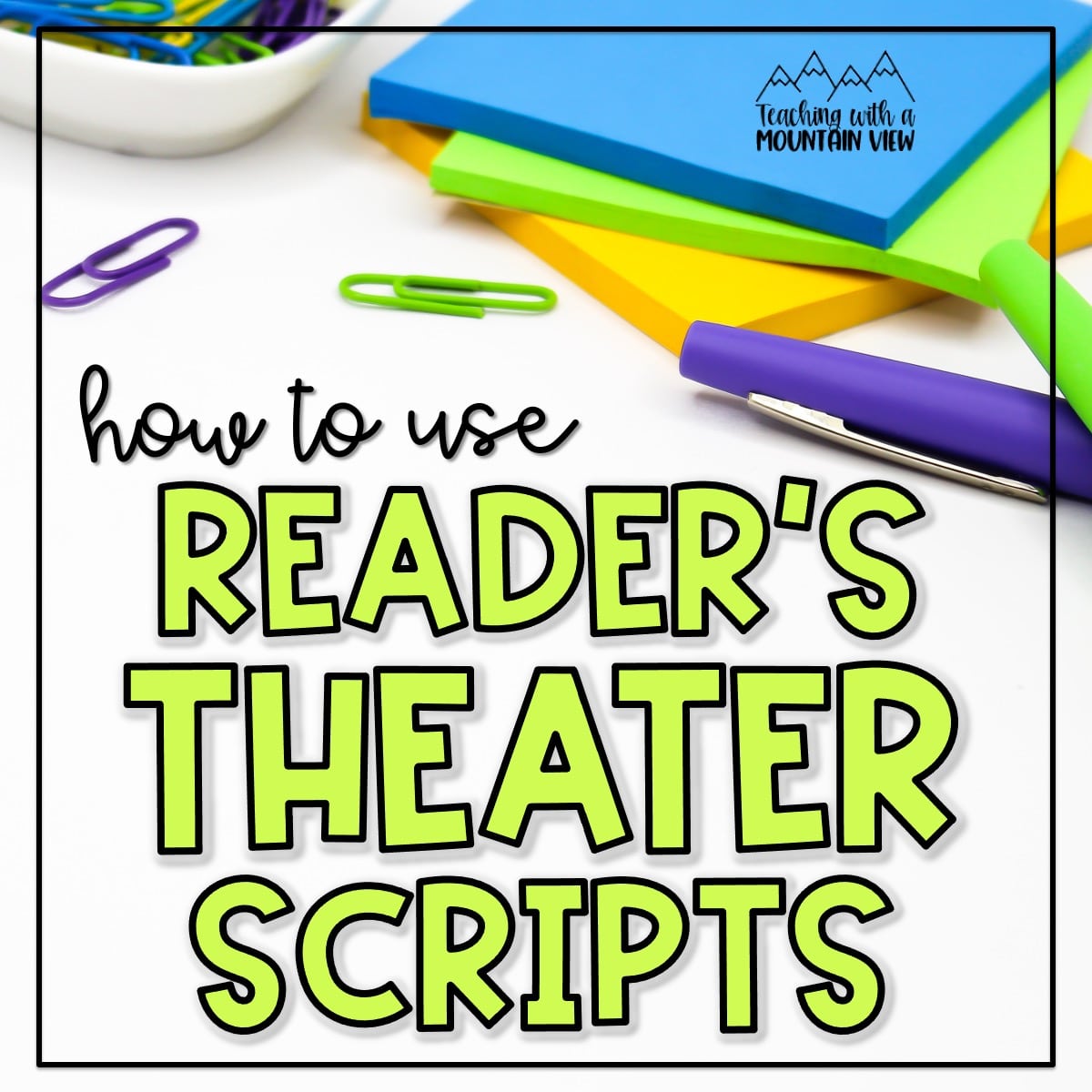
When I first heard about reader’s theater, I thought surely that was something for a drama class. Over the years though, I have really come to enjoy it and seen many benefits by using it in our classroom. One of the most obvious reasons? My students love it and are always begging to read! I love that reader’s theater brings my students together as readers, and that they gain reading skills far beyond fluency. Here’s how to use reader’s theater scripts in your upper elementary classroom and some tips for getting started if you’re brand new to it.
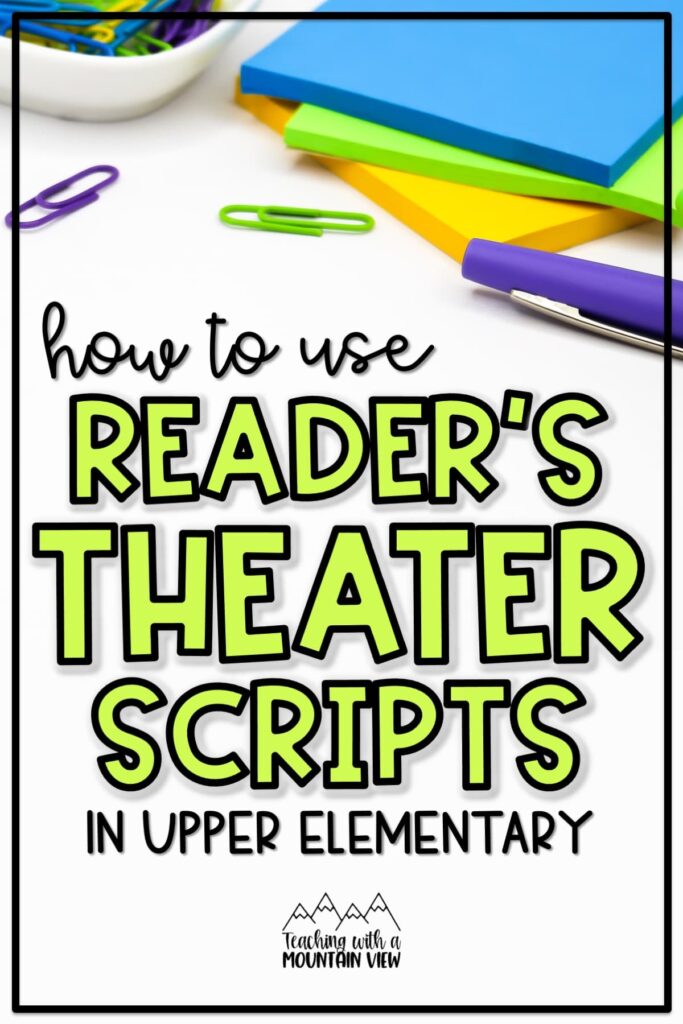
What is Reader’s Theater?
In reader’s theater, students orally read aloud a part in a play. It can be done as a whole class, in a small group, or with partners. Typically there is also a performance aspect, but that is optional.
The most common benefit of reader’s theater is improving fluency. Instead of memorizing lines like you would for a theater or drama class, these scripts have students read their lines. The more time you give students to practice and repeat their lines, the better it is for their fluency.
If you want more tips for building reading fluency, check out this post with 10 Tips for Building Reading Fluency. You can also download several free fluency lessons in this Teaching Oral Reading Fluency post.
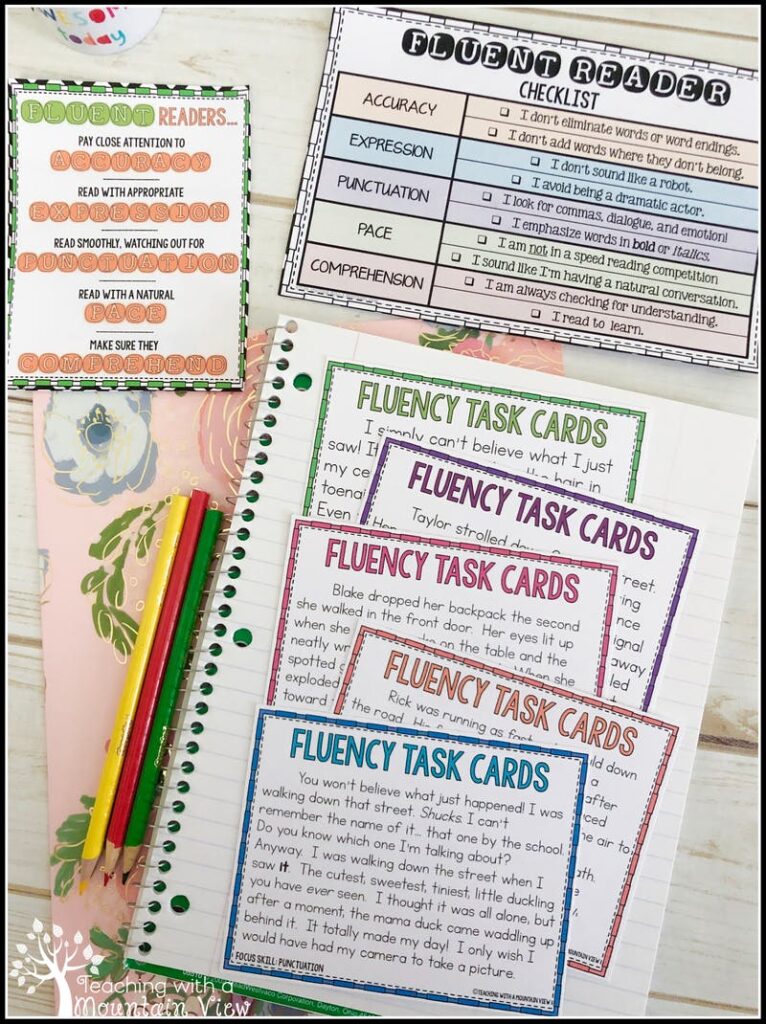
The Benefits of Reader’s Theater
While reader’s theater is most often known for fluency, there are many other benefits as well. Reader’s theater can also help with student confidence in reading and expression. We all have students who sound very monotone while reading. Performing often can promote more expression because students are listening to various voices. When you think about it, how much oral reading do we normally do outside the classroom? Not much! We can see students become more confident as they practice and advance their reading skills through repeated readings.
With a purposeful script, you can also tie in a variety of key reading skills. I designed my reader’s theater scripts to reinforce cause and effect, character traits, compare and contrast, fact and opinion, inferencing, perspective and point of view, story elements, and sequencing.
I also created scripts with a variety of group sizes to make sure all students have several chances to speak in each script. Oftentimes students are given scripts with numerous characters and only speak a handful of times in each play. My scripts come with parts for 2-6 students. This allows for smaller groups to maximize reading time and fluency practice, more collaboration with smaller group sizes, and ensures that everyone has a valuable part in the play. This also allows for easier differentiation because you can put students in different sized groups based on their skills and strengths. Finally, it also makes planning easier for teachers with a wide variety of class sizes!
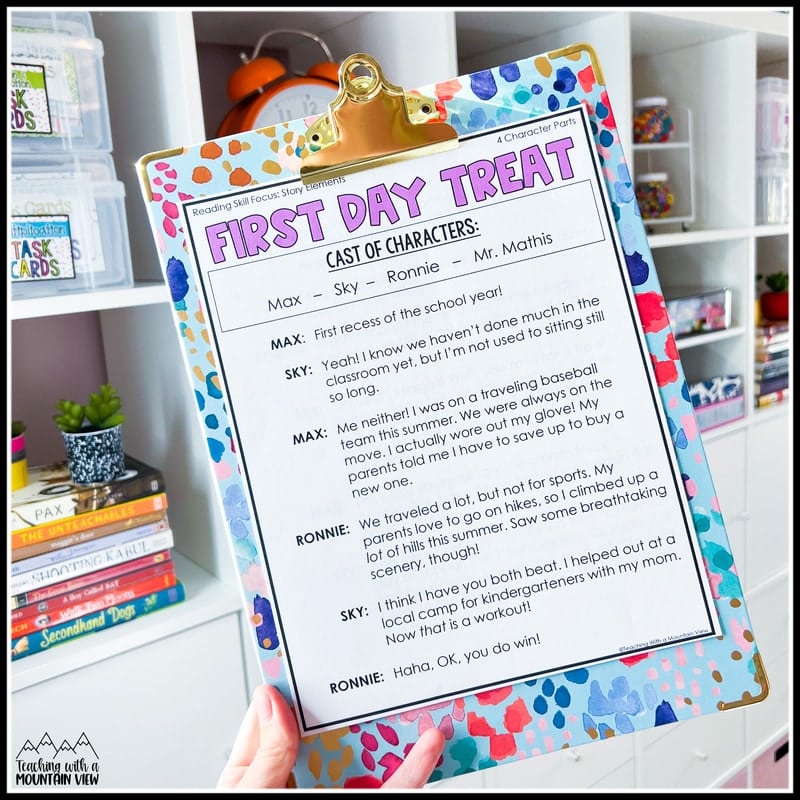
Tips for Using Reader’s Theater
Whether you are new to using reader’s theater or just want to improve the implementation in your classroom, here are a few things I have found to be helpful:
#1 You don’t have to go all out with props.
I know it has the name theater in the title, but no one is expecting a Broadway show! You can incorporate reader’s theater in your classroom with zero costumes or props. If you do want to add in props, keep it simple!
I like to keep a bucket of hats, glasses, and other small items that can be used for a variety of plays. If we have time during the week, I might even have my students create some make-shift props from construction paper, such as a badge or paper mustache. In the end, the props are optional and not the key part of the activity.
#2 Keep it fresh and exciting.
Students really do love reader’s theater, so you want to keep it that way! An easy way to do this is to switch up how you utilize reader’s theater in your classroom. I like to use scripts in my teacher-led small groups, but that isn’t the only way to use them. Here are some other ideas:
- Have students read with a partner or in student-led centers. Then dedicate a day to presentations.
- Have students record their production (either audio only to really focus on voice or as a video with simple props). Then have other students listen to or watch the recordings during centers while completing listener-specific tasks.
- Team up with a lower elementary teacher and have your students perform for younger students.
#3 Hold your students accountable.
You might be thinking, “What do my students do when they are not performing?” I have found that student accountability during reader’s theater is very important. I hold my students accountable by making sure I have questions and writing prompts ready to do.
During the play, I ask my students to take notes and pay close attention to the action. Then when the performance is complete, my students know they will be completing an activity or assessment where they will answer skill-based questions about the performance. This keeps my students from simply snoozing or glancing around the room during performances.
Each play has a one-page reader task that asks students to think critically about the content of their play and focuses on a single key reading skill AND audience comprehension tasks that hold all of your students accountable.

Seasonal and Skill-Based Scripts
Hopefully by now, my passion for reader’s theater is quite clear! I have seen great benefits and advancements in my students’ reading skills after routinely incorporating reader’s theater. It’s become an activity in my classroom where students say, “When are we doing the next play?” And as a teacher, that truly warms my heart!
If you’re ready to jump in, you can browse both seasonal reader’s theater scripts and skill-based reader’s theater scripts in my shop.
Mary Montero
I’m so glad you are here. I’m a current gifted and talented teacher in a small town in Colorado, and I’ve been in education since 2009. My passion (other than my family and cookies) is for making teachers’ lives easier and classrooms more engaging.







